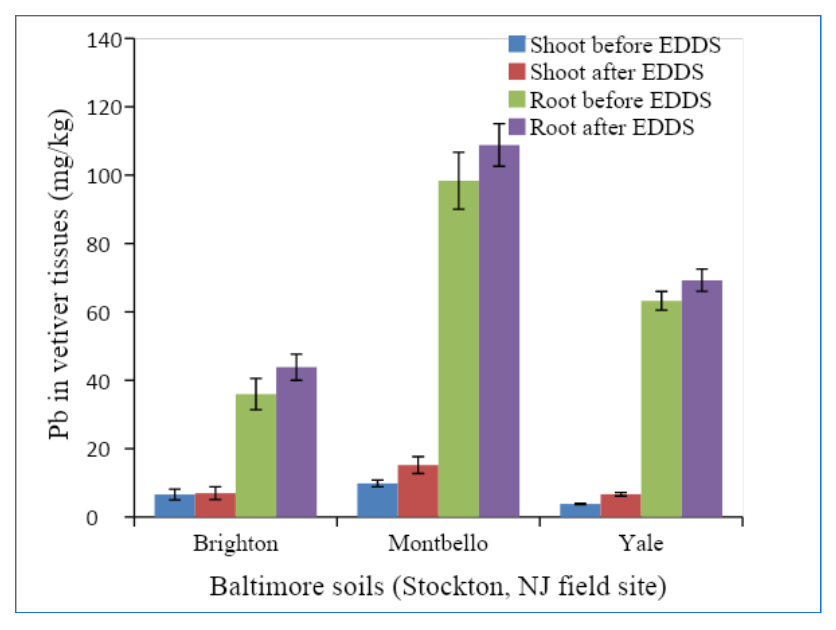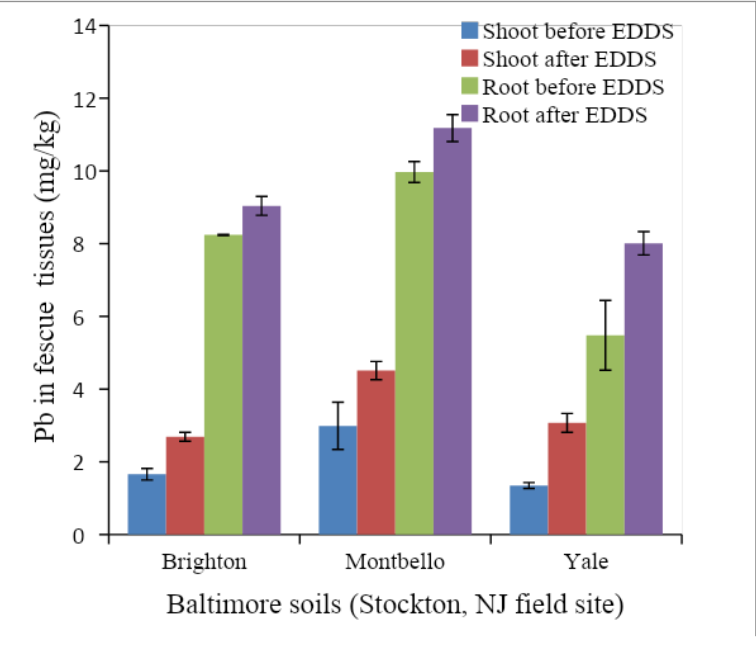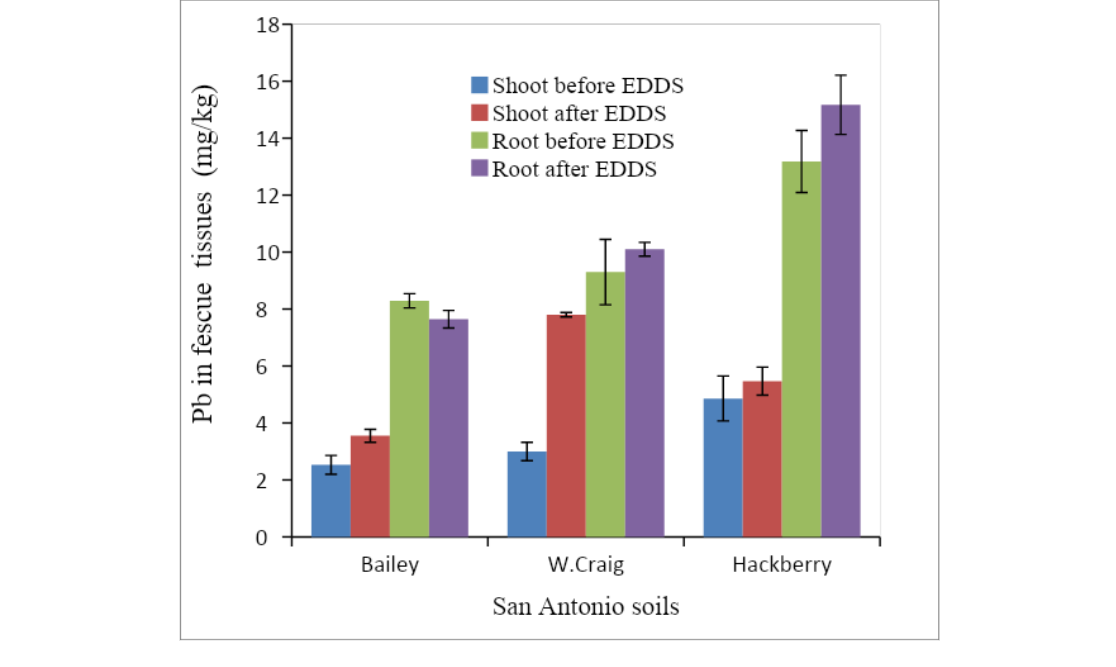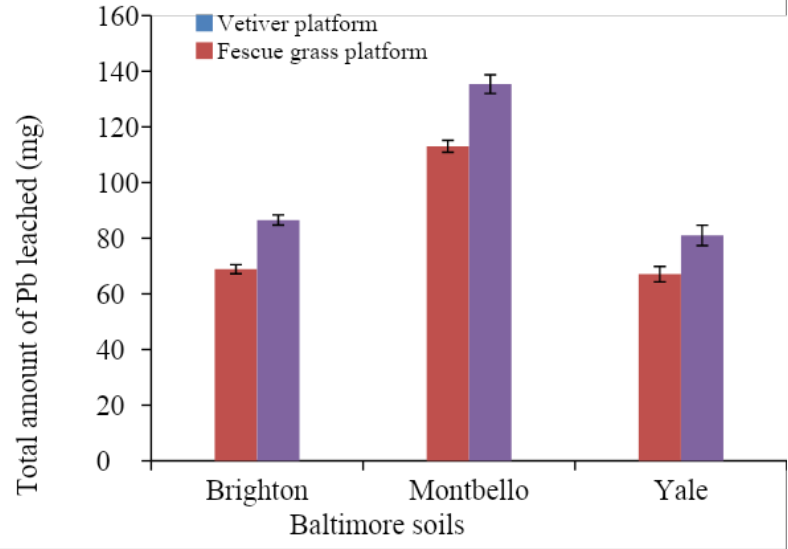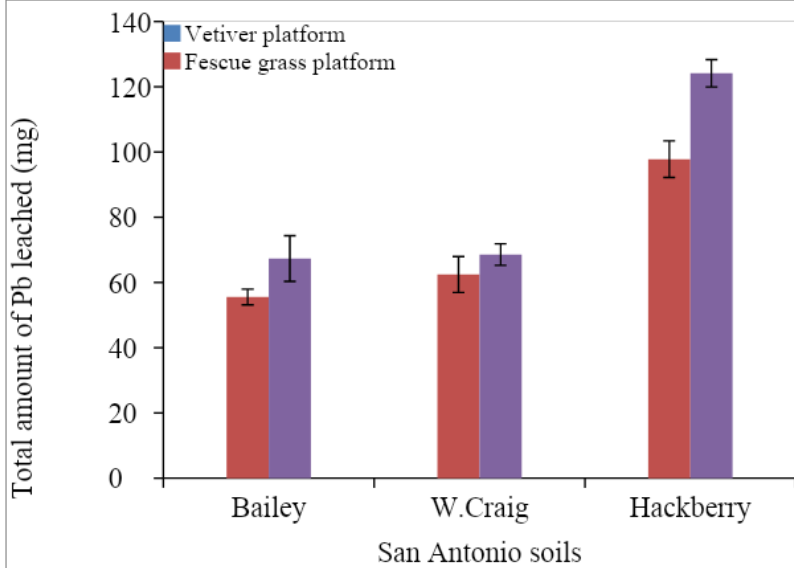The first chelating agent application was EDDS at 10 mmol/kg. Leaching samples were analyzed before and after treatment of EDDS to determine pH, turbidity, and conductivity. Plant and soil samples were analyzed 15 days after treatment of chelating agents. The results showed that the first application of EDDS increased the solubility of lead and lead uptake. The fescue showed a similar result with a slight increase in root and shoot lead concentrations for both Baltimore soil and San Antonio. Overall the result showed that the roots had higher lead concentrations compared to the shoots and that EDDS increased translocation. The total amount of lead was analyzed; vetiver grass lead concentrations were 28.6 to 46.48 mg in San Antonio and 10.28-31.47 mg for Baltimore soil. Fescue lead concentrations were between 1.37-1.88 mg for both soils. Overall, Vetiver, after the first application of EDDS, was more effective at uptaking lead compared to fescue (Datta, Sarkar, and Andra).
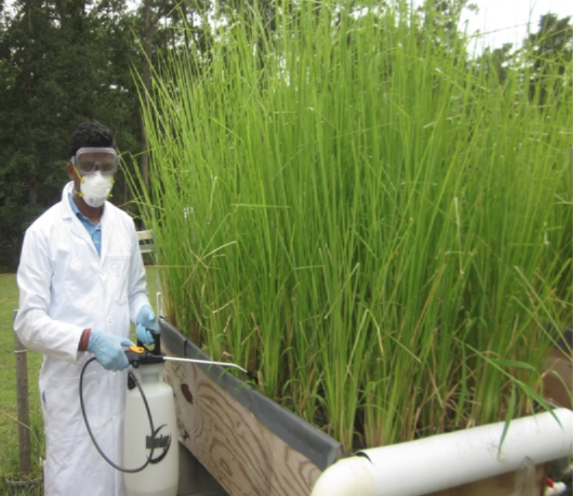
The leach samples were collected several times throughout the experiment and analyzed. After the EDDS application, both soils showed an increase in the solubility of lead compared to before application. Overall the result shows that fescue leached more lead than Vetiver (Datta, Sarkar, and Andra).
Soils samples were collected before and after EDDS application. For the Baltimore soils, lead from the vetiver grass was between 1223-1830 mg/kg and 1246-1870 mg/kg lead in fescue. For the San Antonio soils, the lead from the vetiver grass was 972-2362 mg/kg and 1012-2388 mg/kg from the fescue. After the EDDS application, Baltimore soils decreased Vetiver from 1170-1753 and fescue 1232 -1865 mg/kg. For the San Antonio soils, both Vetiver and fescue showed a decrease with 945-2300 mg/kg and 997-2375 mg/kg. Overall, EDDS application resulted in a decrease in the soluble lead, and Vetiver had less lead concentrations compared to fescue (Datta, Sarkar, and Andra).
Vetiver and fescue grasses were harvested after the first EDDS application and set for composting. Lead toxicity from the composting grasses was analyzed. The results showed that small amounts of lead leached from the compost but values were lower than the USEPA standards. Overall it showed that cut grass is not hazardous and can be disposed of normally (Datta, Sarkar, and Andra).
